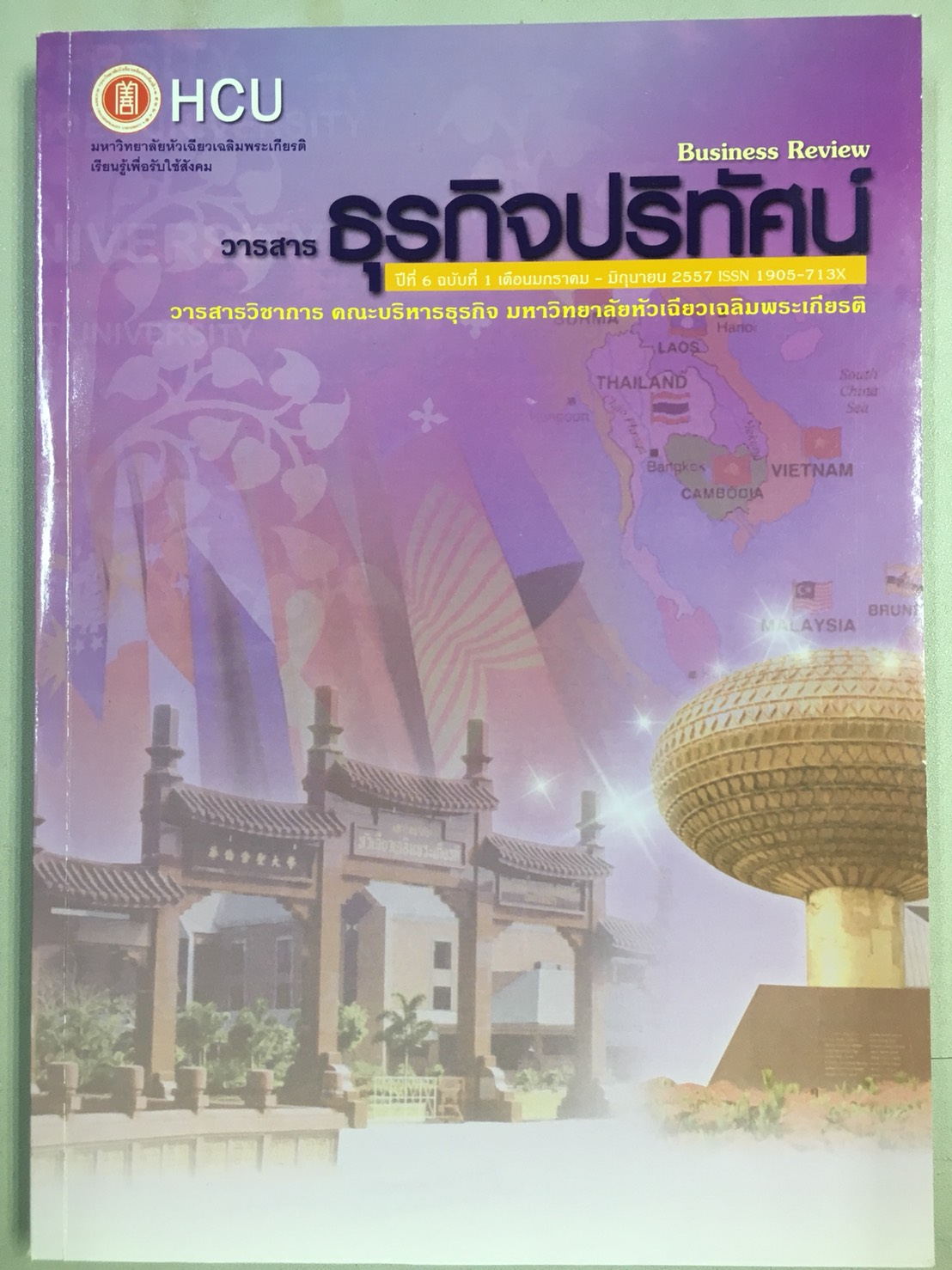A Study Of Communication Model Of Carbon Footprint Label: A Case Study Of Food And Beverage Products
Keywords:
Carbon Footprint, Greenhouse Gas Emissions, Communication ModelAbstract
Recently, many countries have been aware of the world environment si, especially the global warning problem. Carbon footprint is on of tools to assess greenhouse gas emissions, it has been supported to transfer information to customers in order to provide solutions for consumer to make decision in purchasing low carbon products or service. Objectives of this study were 1) explore personal factors of respondents 2) find out knowledge on respondents’ carbon footprint label of products and 3) study an appropriate communication model of carbon footprint label. This study is quantitative research, 390 questionnaires were distributed in Bangkok. The study found that the majority of sample was female, 25-30 years old, hold bachelor’s degree, work as employee in private companies with average monthly income of more than 30,000 Baht. Most of sample has always read production date/expiry date, but have not read label involved with environment information. Although the majority of respondents did not have knowledge about carbon footprint but almost of them were able to answer carbon footprint symbol of Thailand. The results of communication model test showed that at the cognitive stage was at moderate level, affective stage and behavioral stage were at high level. The results of hypotheses testing represented that different gender affected to respondents’ perception and behavior. The different age affected to exposure stage and cognitive stage. Cognitive stage correlated to affective stage at a moderate level. Exposure state correlated to intention at a low level. Cognitive stage did not correlate to affective stage. Affective stage correlated to behavioral stage at a moderate level. Suggestions for this study are 1) public sector should provide more information and knowledge on carbon footprint to Thai people 2) advertising and public relation are main communication tools to increase knowledge about carbon footprint label to their customers.
Downloads
Published
How to Cite
Issue
Section
License
All articles published in the Business Administration and Management Journal Review are copyrighted by the journal.
The views and opinions expressed in each article are solely those of the individual authors and do not represent those of Huachiew Chalermprakiet University or any other faculty members. Each author is fully responsible for the content of their own article. Any errors or issues found are the sole responsibility of the respective author.




